
Do you have a question about the Olympus SP-565UZ and is the answer not in the manual?
| Brand | Olympus |
|---|---|
| Model | SP-565UZ |
| Category | Digital Camera |
| Language | English |
Explains how to navigate and use the camera's menu system for settings.
Describes accessing frequently used shooting functions via the FUNC menu for quicker adjustments.
Lists and explains menu options for managing images after shooting, including editing and printing.
Lists items included in the camera package to ensure all components are present before use.
Provides instructions on how to securely attach the camera strap and lens cap for safe handling.
Details the correct procedure for inserting batteries into the camera for power.
Explains how to insert a microSD card using an adapter for expanded storage capabilities.
Guides the user through the process of setting the camera's date and time for accurate photo data.
Explains how to use the fully automatic mode for simple picture-taking by just pressing the shutter button.
Details the steps to erase individual images directly from the playback screen for quick file management.
Describes how to select the Scene mode (SCN) for optimal settings based on the shooting environment or subject.
Explains shooting in Program mode (P) for automatic exposure with manual control over other shooting functions.
Details shooting in Shutter Priority mode (S) to control shutter speed for capturing motion, with automatic aperture.
Explains how to perform long-exposure shooting by keeping the shutter open manually for extended periods.
Explains how to use the zoom lever to adjust the shooting range from wide-angle to telephoto.
Details how to use the built-in flash effectively for various lighting conditions to capture well-exposed subjects.
Explains how to use the self-timer for delayed shooting, useful for group shots or minimizing camera shake.
Describes how to change the information displayed on the screen to suit different shooting situations or preferences.
Explains how to assign frequently used functions to a custom button for quick access and personalized operation.
Details how to access and use the FUNC menu for quickly setting frequently used shooting functions.
Introduces different playback views like Index, Calendar, and Closeup for efficient image selection and detail checking.
Explains how to view and manage images captured using sequential shooting modes, including automatic playback.
Guides the selection of image quality settings (JPEG, RAW) for various applications like printing or computer editing.
Explains how to adjust white balance settings to ensure accurate color reproduction under different lighting conditions.
Explains different metering modes (ESP, Spot, Center-weighted) for optimal exposure based on scene brightness.
Details how to use digital zoom in combination with optical zoom for extended magnification, potentially affecting image quality.
Explains how to switch between automatic focus (AF) and manual focus (MF) for precise subject sharpness.
Describes using AF Predict to maintain focus on moving subjects, reducing focusing time.
Explains how image stabilization compensates for camera shake to produce sharper images, especially at telephoto or slow shutter speeds.
Provides information on using external flashes, including wireless RC systems and slave flashes, for enhanced lighting control.
Allows selection of color tones (Vivid, Natural) to alter the overall appearance and mood of the captured images.
Explains how to adjust white balance settings to ensure accurate color reproduction under various lighting conditions.
Describes how to adjust image sharpness to make contours appear crisper or softer, enhancing detail or creating a smoother look.
Explains how to reduce noise in images captured at slow shutter speeds to improve clarity and detail.
Details how to use conversion lenses with the camera for specialized photographic effects or magnifications.
Guides the selection of Scene modes (SCN) to automatically optimize camera settings for specific shooting scenarios like portraits or landscapes.
Explains how to select and save specific images from a burst of sequentially captured photos.
Describes the pre-capture movie function that records moments just before the shutter button is fully pressed.
Explains the Quick Shutter mode for reducing shutter release time lag, ensuring moments are captured without delay.
Details the procedures for capturing multiple frames to create panorama images using in-camera stitching methods.
Explains how to set up and start an automatic slideshow of images with transition effects and background music.
Guides users on how to automatically retouch images using the Perfect Fix function to improve lighting and correct red-eye.
Describes how to resize images to a smaller resolution for email attachments or other applications, saving them as separate files.
Explains how to edit RAW image files, adjusting parameters like white balance and sharpness, and saving them as separate JPEG images.
Details the process of cropping images to focus on specific areas or remove unwanted parts, saving the result as a new image.
Describes how to embed a calendar onto selected images, personalizing them with dates.
Explains how to edit facial expressions in detected faces within images, offering quadruplicate previews for selection.
Explains how to create a movie index by extracting key frames, allowing for quick content recall and fine-tuning of selected scenes.
Details how to protect images from accidental deletion, ensuring important photos are preserved.
Guides on how to extract a single still frame from a movie clip, saving it as a separate image file.
Explains how to record short audio comments for still pictures, useful for adding context or notes to images.
Allows users to select a specific starting point for movie playback, dividing movies into chapters for easier navigation.
Explains how to set print reservations (DPOF) on images, enabling direct printing without a computer.
Details the process of formatting the memory card or internal memory to erase all data, preparing it for new use.
Explains how to back up image data from the camera's internal memory to an external card for safekeeping.
Allows users to select the preferred language for the camera's menus and on-screen messages.
Enables customization of the menu screen appearance by selecting different color themes.
Describes how to adjust various camera sounds, including button beeps and shutter sounds, and their volumes.
Allows users to choose whether the top menu appears on the monitor or viewfinder for convenient access.
Explains how to adjust the CCD and image processing function to maintain optimal image quality over time.
Allows setting a second time zone for accurate date/time stamping on images when traveling.
Guides the user through setting the camera's date and time, crucial for organizing and identifying photos.
Explains how to select the correct video output signal (NTSC/PAL) for viewing images on a TV.
Describes how to display grid lines on the LCD monitor to assist with composing shots and framing subjects accurately.
Explains how to display a histogram or highlight over/under-exposed areas to help determine correct exposure settings.
Explains how to assign specific functions to the custom button for personalized and quick access during shooting.
Details how to set the camera to automatically enter sleep mode to conserve battery power when not in use.
Explains how to mute all camera sounds for discreet shooting in quiet environments.
Explains how to print images directly from the camera to a PictBridge-compatible printer without needing a computer.
Guides the user on how to print images using the printer's default settings for quick and simple photo output.
Details how to crop images before printing, allowing users to select specific portions of the photo to be included in the print.
Explains the procedure to cancel a print job that is in progress or has been initiated.
Guides on setting print reservations for individual images, specifying print quantity and date imprint options.
Describes how to clear all existing print reservation data from the memory card, resetting it for new settings.
Outlines the necessary system requirements and installation steps for the OLYMPUS Master 2 software.
Explains the procedure for connecting the camera to a computer via USB for image transfer and management.
Guides the user on how to launch the OLYMPUS Master 2 software and begin its operation.
Describes methods for transferring and saving images directly to a computer using USB Mass Storage Class, bypassing the dedicated software.
Provides guidance on identifying and resolving common camera issues, including error messages and operational problems.
Addresses issues related to camera power, such as batteries not working or performance affected by temperature.
Explains troubleshooting steps when the shutter button does not respond or fails to take pictures, including sleep mode issues.
Offers solutions for display issues on the monitor or viewfinder, such as poor visibility or condensation.
Lists common error messages displayed on the camera's monitor and provides corrective actions for each.
Offers advice on achieving sharp focus in various challenging shooting situations, including low contrast or difficult subjects.
Provides tips on achieving correct exposure and brightness, especially when shooting subjects against backlights or in bright scenes.
Guides on selecting appropriate white balance settings to ensure accurate and natural color reproduction in various lighting conditions.
Offers advice on taking smooth, well-stitched panorama photos by controlling camera movement during shooting.
Provides tips on how to extend battery life by avoiding specific camera operations that consume excessive power.
Offers instructions on cleaning and maintaining the camera body, lens, and monitor to ensure longevity and optimal performance.
Provides essential safety guidelines for handling, using, and storing batteries to prevent hazards and ensure proper operation.
Explains the function and use of xD-Picture Cards for storing images and expanding camera capabilities.
Describes how the memory indicator shows whether the internal memory or card is currently being used for saving images.
Provides a table detailing the number of pictures and movie recording lengths possible with internal memory and xD-Picture Cards.
Explains how to transfer images from the camera to a computer or other devices using the USB cable or a microSD card adapter.
Offers important precautions for handling microSD attachments and cards to prevent damage and ensure proper reading of images.
Details how to use the camera with an Olympus Wireless RC Flash System for multi-flash photography.
Provides essential safety instructions and general precautions for using the product safely and effectively.
Contains legal information, disclaimers of warranty, and copyright notices related to the product and its manual.
Outlines the limitations and exclusions of the product's warranty, clarifying what is not covered by Olympus.
States the copyright protection for the manual's content and prohibits unauthorized reproduction or use of the material.
Provides regulatory compliance information and contact details specific to customers in North and South America.
Lists specific conditions and items that are excluded from the limited warranty coverage provided by Olympus.
Provides instructions on how to prepare the product for service and what information to include when requesting technical support.
Lists the technical specifications for the camera, including sensor, lens, shutter, and dimensions.
Details the specifications for the microSD attachment, including its dimensions and operating environment.
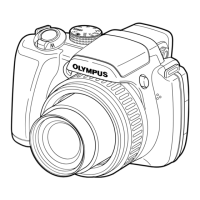

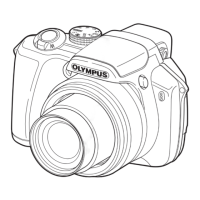
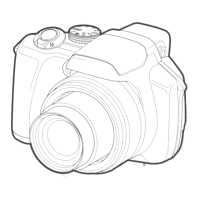
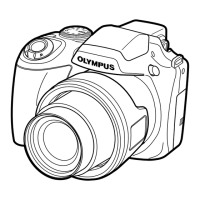

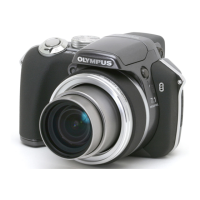



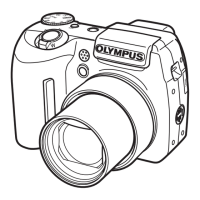

